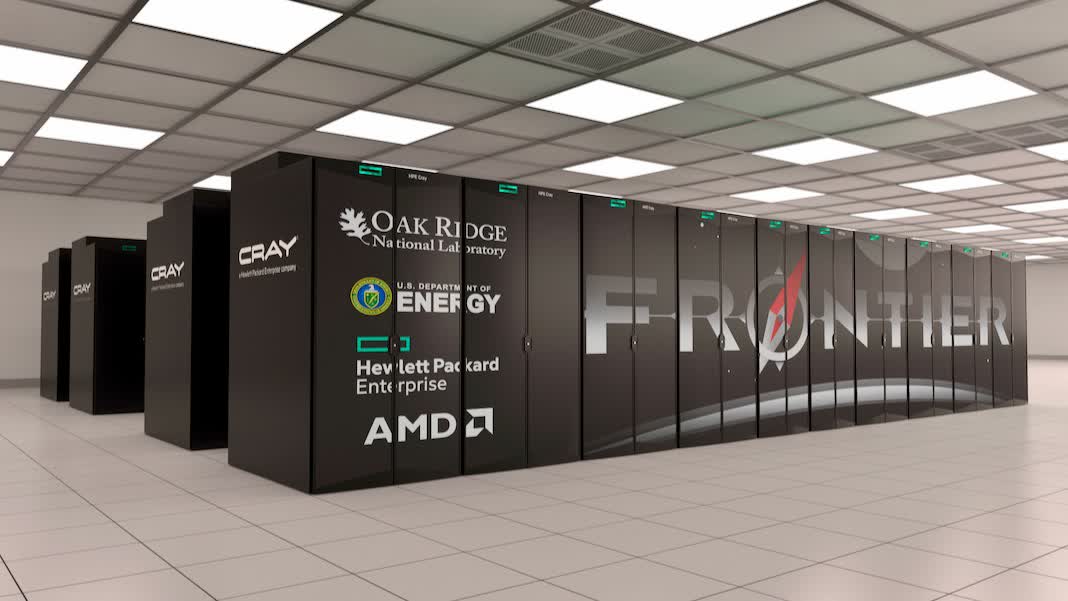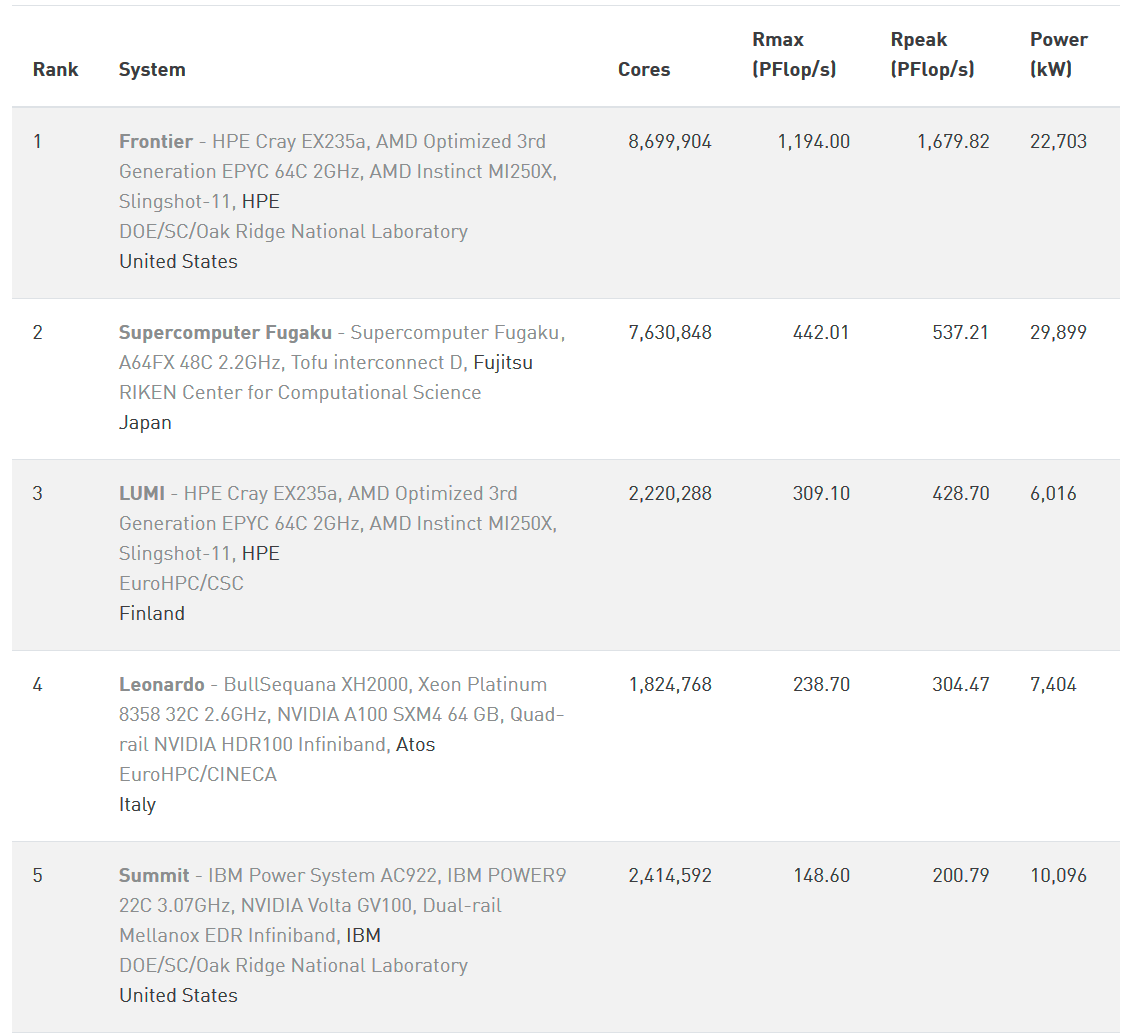What just happened? The 61st edition of the TOP500 list has arrived, showcasing the fastest supercomputers in the world. As before, the only exascale computer – one with performance over 1 exaflop – is the leading machine: the US' Frontier system that is powered by AMD Epyc processors. The United States dominates the rankings, and it's an especially good showing for AMD.
It was a year ago when the US Department of Energy's Frontier supercomputer became the first exascale computer on the TOP500 list, knocking Japan's 442 petaflop Fugaku off the top spot.
Frontier's HLP-MxP benchmark score, which measures high-performance computing and artificial intelligence workloads, has increased from 1.02 exaflops in November to 1.194 exaflops (1.67 exaflops peak) in the most recent list, a 17% leap in performance.
TOP500 also incorporates the High-Performance Conjugate Gradient (HPCG) benchmark results, offering an alternative performance metric. Frontier has the second-highest HPCG score (14.05), while Fugaku is number one, thanks to its score of 16.0.
Frontier boasts a whooping 8,699,904 cores. Its HPE Cray EX architecture combines 3rd-gen AMD Epyc CPUs with AMD Instinct 250X accelerators alongside Slingshot-10 interconnect.
In addition to the top supercomputer being powered by AMD, team red's components are found in 121 systems in the top 500, an increase of 29% compared to last year. Four of the top ten machines are AMD-powered, while two use Intel processors and two are powered by IBM.
AMD machines made up almost half (21) of the 44 new systems added to the TOP500 list over the last year, though Intel still has a higher number overall.
China and the US continue to dominate the list. The US now has 150 supercomputers in the top 500, up from 126, while China's number of placements fell from 162 to 134. Looking at continents, however, Asia placed top with 192 spots, followed by North America (160) and Europe (133).
China used to have the top two supercomputers on the list - Sunway TaihuLight and Tianhe-2A – and more entries than the US overall, but the country has been slipping in recent years, having added just one system in 2023. US sanctions haven't helped, especially those that target high-end GPUs from Nvidia and AMD that can be used in supercomputers.
However, as The Reg notes, China may be holding back. Its Sunway Oceanlite and Tianhe-3 systems, both of which are based on local chip architectures, exceeded the exaflop milestone in 2021. It's believed that China is skirting sanctions to build supercomputers, which could explain why it doesn't want to bring more attention to new machines by submitting them to the TOP500.

